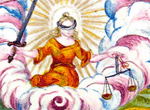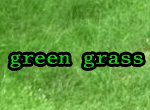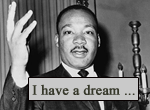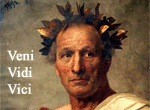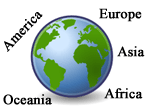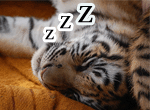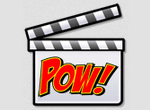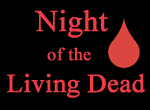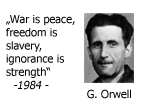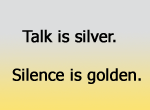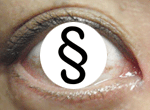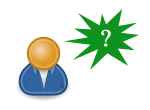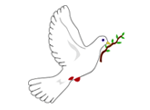Stylistic Devices / Rhetorical Devices
Der folgende Artikel gibt eine Übersicht über die 15 wichtigsten rhetorischen Mittel (Stylistic Devices) für den Englischunterricht. Das beinhaltet zunächst für jedes Stylistic Device eine kurze Definition / Bedeutungserklärung auf Deutsch. Darauf aufbauend folgen in englischer Sprache eine Definition, drei anschauliche Beispiele und die vom Stilmittel ausgehende Wirkung.
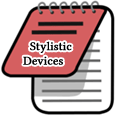
Ebenso wie die deutsche Sprache, kommt auch die englische Sprache nicht ohne Stilmittel aus. Stylistic Devices können je nach Kontext viele Funktionen inne haben: Betonung bestimmter Sachverhalte, Kritik üben, Aufmerksamkeit bündeln, eine humorvolle Situation schaffen oder auch den Zuhörer zum Nachdenken zu bewegen.
Im Unterricht werden Stylistic Devices besonders im Zusammenhang mit der Gedichtanalyse (poem analysis) oder der
Redeanalyse (political speech analysis) benötigt. Im Rahmen dieser
Aufsatztypen müssen die Stylistic Devices erkannt, benannt und deren Wirkung beschrieben werden.
Wirkung und Funktion
sind nicht immer leicht herauszuarbeiten, weshalb du weiter unten zu jedem einzelnen Stilmittel allgemeine Informationen findest.
Nachfolgend eine Liste der fünfzehn wichtigsten rhetorischen Stilmittel im Englischunterricht:
| Stylistic Devices | Definition / Bedeutung |
|---|---|
| Allegory (Allegorie) |
bildhafte Metapher, bei der das Objekt etwas anderes repräsentiert |
| Alliteration (Alliteration) |
Zwei oder mehr aufeinanderfolgende Wörter mit dem selben Anfangsbuchstaben |
| Anaphora (Anapher) |
Wiederholung eines oder mehrerer Worte am Satzanfang / Versanfang |
| Climax (Klimax) |
dreigliedrige Steigerung |
| Enumeration (Aufzählung) |
abschließende Aufzählung mehrerer Begriffe |
| Hyperbole (Hyperbel) |
starke Übertreibung |
| Metaphor (Metapher) |
bildhafter Vergleich |
| Onomatopoeia (Onomatopoesie) |
Lautmalerei |
| Oxymoron (Oxymoron) |
zwei sich gegenseitig ausschließende Begriffe |
| Paradox (Paradoxon) |
unauflösbarer Widerspruch |
| Parallelism (Parallelismus) |
ähnlicher Satzbau in mindestens zwei aufeinanderfolgenden Sätzen / Versen |
| Personification (Personifikation) |
Vermenschlichung |
| Rhetorical Question (Rhetorische Frage) |
Frage, bei der keine Antwort erwünscht ist |
| Simile (Vergleich) |
Gegenüberstellung zweier Begriffe |
| Symbol (Symbol) |
Begriff, der im übertragenen Sinne für etwas anderes steht |
Allegory
Definition:
- A symbol with a hidding meaning
Examples:
- Justitia for justice
- The port gets ever closer to the body's craft. - Andreas Gryphius
- Liberty Leading the People - Eugene Delacroix
Function and Effect:
- Aesthetic formulation; Create a picture in the mind of the listener
Alliteration
Definition:
- At least two consecutive words beginning with the same letters
Examples:
- The Elfin from the green grass (...) - Edgar Allan Poe
- I murder hate by field or flood (...) - Robert Burns
- I just had eighteen straight scotches. I think that's the record. - Dylan Thomas
Function and Effect:
- Emphasizes the urgency; Aesthetic formulation; Intensification
Anaphora
Definition:
- Repeating of a sequence of words at the beginning of a sentence or verse.
Examples:
- I have a dream (...). I have a dream (...). - Martin Luther King
- Mad world! Mad kings! Mad compositions - William Shakespeare
- I smell the earth, I smell the bruised plant, I look into the crater of the ant - Robert Frost
Function and Effect:
- Accentuate and emphasize something; Convincing the listener; Dramatization
Climax
Definition:
- A three-stepped increase of words or phrases.
Examples:
- Veni, vidi, vici. - Julius Cäsar
- My brother, my captain, my king. - J. R. R. Tolkien
- Let a man acknowledge his obligations to himself, his family, his country and his God. - George Washington
Function and Effect:
- Emphasizes the urgency; Dramatization
Enumeration
Definition:
- A completely and ordered list of words or items.
Examples:
- Dear inhabitants from Europe, America, Asia, Africa and Oceania.
- This is my cap, this is my coat, here is my shaving kit - Günter Eich
- Look at the red, green, yellow and blue lights.
Function and Effect:
- Create the feeling of wholeness; Accentuate and emphasize something
Hyperbole
Definition:
- Exaggeration of a normal issue / circumstances.
Examples:
- dead tired (totmüde), snail pace (Schneckentempo), ten a penny (wie Sand am Meer)
- Queen, you are full fair, 'tis true. But Snow-white fairer is than you - Brothers Grimm
- A sea of a thousand tears
Function and Effect:
- Dramatization; Shock effect
Metaphor
Definition:
- Pictorial comparison between two things that are interconnected.
Examples:
- see something through rose coloured glasses; looking for a needle in a haystack
- trample on human rights; hit the bull's-eye
- The sky flows into stone channels. - Oskar Loerke
Function and Effect:
- Create a picture in the mind of the listener; Illustration of an issue; Aesthetic formulation
Onomatopoeia
Definition:
- Words that imitate sounds.
Examples:
- Pow, Meow, woof woof, tick tock, oink oink, click clack
- The bean bursts noiselessly through the mould in the garden - Walt Whitman
- scratching, buzzing, dazzling
Function and Effect:
- Aesthetic and tuneful formulation;
Oxymoron
Definition:
- Two or more words, which seems in combination totaly impossible
Examples:
- living dead, black milk, open secret, less is more
- Visibly: invisibly, around you? - Johann Wolfgang von Goethe
- War is peace, freedom is slavery, ignorance is strength. - George Orwell
Function and Effect:
- Shock effect; Make the reader think about the issue
Paradox
Definition:
- Irresolvable contradictions of a set of facts.
Examples:
- War is peace, freedom is slavery, ignorance is strength. - George Orwell
- Free is only death, but it costs your life
- The only constant is change. - Heraclitus
Function and Effect:
- Aesthetic formulation; Make the reader think about the issue
Parallelism
Definition:
- Parallel or similar syntax in several sentences.
Examples:
- Talk is silver, silence is golden
- O death, where is your victory? O death, where is your sting? - Bible
- We charge him (...). We accuse him (...). We censure him (...). - Thomas Babington Macaulay
Function and Effect:
- Intensification; Repeat something
Personification
Definition:
- Humanisation of animals, things and lifeless.
Examples:
- The eye of the law; Mother Nature
- Then let not winter's ragged hand deface - William Shakespeare
- The world is a fine place and worth the fighting for - Ernest Hemingway
Function and Effect:
- Aesthetic formulation; Illustration of an issue
Rhetorical Question
Definition:
- Question where no response is expected
Examples:
- Didn't I tell you before?
- Are you out of your mind?
- Isn't that great?
Function and Effect:
- Make sb. feel to be a part of the speech; Dramatization; Involve the listener
Simile
Definition:
- Comparison between two things through the connectives "as", "like" or "than"
Examples:
- She was as hungry as a lion; As busy as a bee
- My mistress' eyes are nothing like the sun - William Shakespeare
- Coral is far more red than her lips' red - William Shakespeare
Function and Effect:
- Create a picture in the mind of the listener; Connect two different things
Symbol
Definition:
- An object, which represents an idea or something else
Examples:
- White pigeon (freedom), Uncle Sam (USA), Star of David (Judaism)
- Hammer and sickle (communism), Red roses (love), Crucifix (Jesus Christ)
- Ring (loyalty), blue helmet (UN soldiers), milk and honey (paradise)
Function and Effect:
- Illustration of an issue; Create a picture in the mind of the listener; Aesthetic formulation

